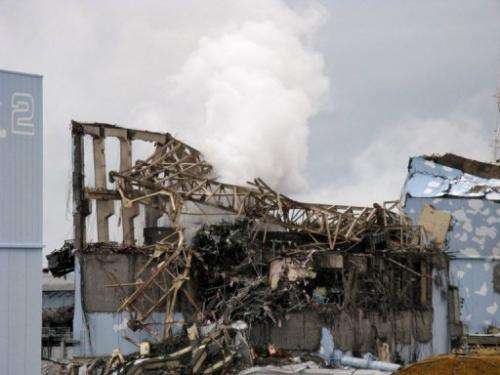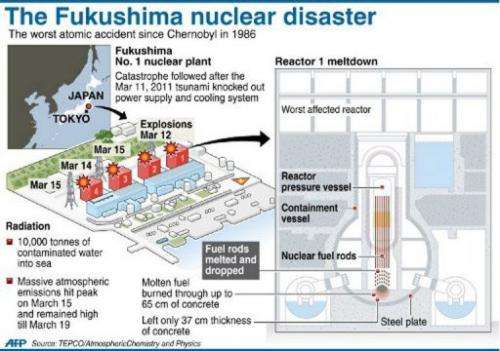Toxic radiation 'in groundwater' at Fukushima

Toxic radioactive substances have once again been detected in groundwater at the crippled Fukushima nuclear plant, its Japanese operator said on Sunday, the latest in a series of incidents at the tsunami-battered complex.
Tokyo Electric Power Co (TEPCO) said tests showed that tritium, a radioactive isotope of hydrogen used in glow-in-the-dark watches, was present at levels 10 times the permitted rate.
"From test samples on July 5... we detected a record high 600,000 becquerels per litre" of tritium, 10 times higher than the government guideline of 60,000 becquerels per litre, TEPCO said in a statement.
"We continue efforts to prevent further expansion of contamination by construction works... and will strengthen monitoring of pollution comprehensively," it said.
The new readings came after TEPCO said in late June that it had detected the highly toxic strontium-90, a by-product of nuclear fission that can cause bone cancer if ingested, at levels 30 times the permitted rate.
At the time it had detected tritium at around eight times the allowed level, or 500,000 becquerels per litre.
The substances, which were released by the meltdowns of reactors at the plant in the aftermath of the huge tsunami of March 2011, were not absorbed by soil and have made their way into underground water.
Subsoil water usually flows out to sea, meaning these two substances could normally make their way into the ocean, possibly affecting marine life and ultimately impacting humans who eat sea creatures.

However, a TEPCO official said last month that seawater data showed no abnormal rise in the levels of either substance as the company believed the groundwater was largely contained by concrete foundations and steel sheets.
The revelations are the latest in a growing catalogue of mishaps at the crippled plant, more than two years after the worst nuclear disaster the world has seen in a generation.
TEPCO said last week it would ask Japan's nuclear watchdog for the green light to re-fire two of the seven units at the world's biggest Kashiwazaki Kariwa nuclear plant in Niigata prefecture, a move rebuked by local leaders.
Tens of thousands of people were forced from their homes by the threat of radiation after the tsunami and Fukushima disaster, with some still unable to return.
Although the nuclear accident is not officially recorded as having directly killed anyone, the natural disaster claimed more than 18,000 lives and was one of Japan's worst ever peacetime tragedies.
© 2013 AFP
















